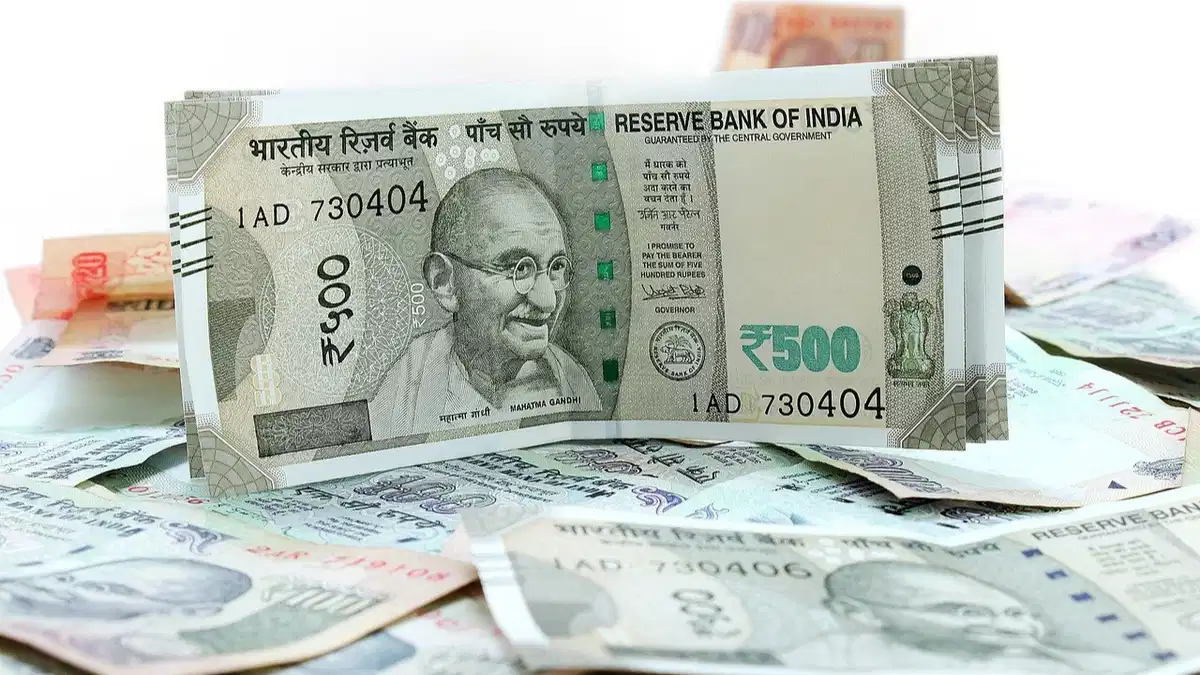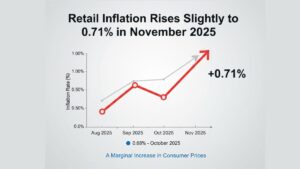India’s Goods and Services Tax (GST) collections witnessed a strong growth of 9.9% year-on-year (YoY) in March 2025, reaching Rs 1.96 lakh crore. This marks a significant rise in indirect tax revenue, reflecting steady economic activity and increased compliance.
Breakdown of GST Collections for March 2025
The gross GST collection for March stood at Rs 1.96 lakh crore, demonstrating strong performance across different tax categories:
- Central GST (CGST): Rs 38,100 crore
- State GST (SGST): Rs 49,900 crore
- Integrated GST (IGST): Rs 95,900 crore
- GST Cess: Rs 12,300 crore
After adjusting for refunds, net GST collections for March 2025 stood at Rs 1.76 lakh crore, showing a 7.3% YoY growth. This increase highlights sustained consumption patterns and better tax administration.
Annual GST Performance for FY25
The cumulative GST collections for the financial year 2024-25 (FY25) have reached Rs 22.08 lakh crore, recording a 9.4% YoY growth. After accounting for refunds, net GST collections for FY25 stood at Rs 19.56 lakh crore, marking an 8.6% increase from the previous financial year.
The continued rise in GST collections aligns with the government’s budget estimate, which projected an 11% increase in GST revenues for the year, with total anticipated revenues of Rs 11.78 lakh crore from Central GST and compensation cess.
Month-wise GST Collection Trends
The month-wise trend in GST collections over recent months highlights the consistent growth in indirect tax revenue:
- March 2025: Rs 1.96 lakh crore (+9.9% YoY)
- February 2025: Rs 1.83 lakh crore (+9.1% YoY)
- January 2025: Rs 1.96 lakh crore (+12.3% YoY)
- December 2024: Rs 1.77 lakh crore (+7.3% YoY)
- November 2024: Slower growth of 8.5% YoY, attributed to reduced consumption post-festive season
Factors Driving the Growth in GST Collections
Several key factors have contributed to the rise in GST revenues:
- Increased Domestic Consumption: Higher demand for goods and services has led to increased tax revenue from businesses.
- Improved Tax Compliance: Strengthened enforcement mechanisms and better reporting have helped curb tax evasion.
- Economic Growth: Steady growth in manufacturing and services sectors has contributed to a higher tax base.
- Digital Tax Initiatives: The introduction of AI-based monitoring, e-invoicing, and stricter audit mechanisms has enhanced compliance.
- Seasonal Effects: The beginning of the financial year often sees higher tax filings and settlements.
Future Outlook for GST Revenue Growth
With the government setting an ambitious 11% target for GST revenue growth in FY25, the focus remains on:
- Expanding the tax base by bringing more businesses under the GST framework.
- Stronger compliance measures, reducing tax evasion and leakages.
- Boosting economic activities, particularly in manufacturing and retail sectors.
- Continued technology adoption, including automation in GST return filings and AI-based monitoring.
The overall GST performance in March and FY25 suggests sustained revenue growth, bolstering the government’s fiscal position and enhancing financial stability.
Summary of GST Collections (March & FY25)
| Category | Amount (Rs Crore) | YoY Growth (%) |
|---|---|---|
| March 2025 Gross GST Collection | 1,96,000 | 9.9% |
| Central GST (CGST) | 38,100 | – |
| State GST (SGST) | 49,900 | – |
| Integrated GST (IGST) | 95,900 | – |
| GST Cess | 12,300 | – |
| March 2025 Net GST Collection | 1,76,000 | 7.3% |
| February 2025 Gross GST Collection | 1,83,646 | 9.1% |
| January 2025 Gross GST Collection | 1,96,000 | 12.3% |
| December 2024 Gross GST Collection | 1,77,000 | 7.3% |
| FY25 Gross GST Collection | 22,08,000 | 9.4% |
| FY25 Net GST Collection (Post Refunds) | 19,56,000 | 8.6% |



 India’s Forex Reserves Rise by $1.68 Bil...
India’s Forex Reserves Rise by $1.68 Bil...
 India’s Net Direct Tax Collections Rise ...
India’s Net Direct Tax Collections Rise ...
 Retail Inflation Rises Slightly to 0.71%...
Retail Inflation Rises Slightly to 0.71%...







